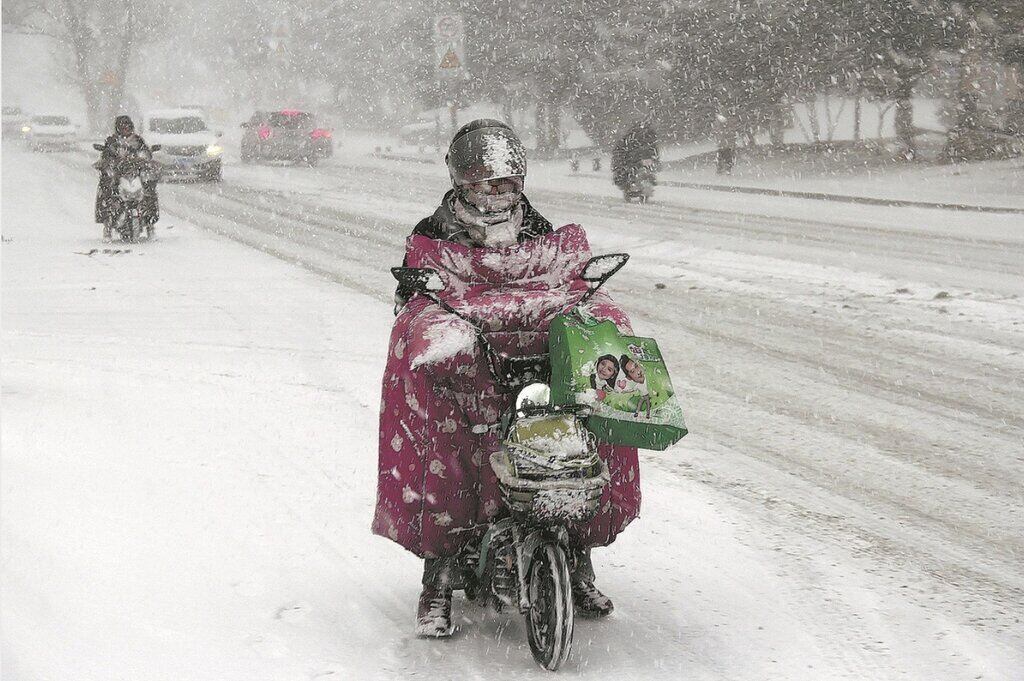The first cold front of the year hit China on February 6, causing temperatures to drop by more than 10 degrees Celsius in some northern regions of China, with winds of 9 to 10 on the Beaufort scale, according to the latest weather forecast from the China National Meteorological Center on February 7.
The China National Meteorological Center warned that the cold air is expected to cause temperatures to drop by 6 to 8 degrees Celsius in most areas north of the Yellow River-Huai River border, some areas in the east of the northwest and northern China, and in the Yellow River-Huai River area alone, temperatures will drop by more than 10 degrees Celsius.
Due to the influence of this cold air mass, the temperature in most of southern China will drop by 4 to 6 degrees Celsius, some areas will drop by 7 to 8 degrees Celsius, and some other areas will drop by more than 10 degrees Celsius.
Sun Qianqian, a weather expert at the National Meteorological Center, said that a cold air mass from the Inner Mongolia Autonomous Region is moving southward to southern China. The cold air mass is forecast to experience the deepest temperature drop in northern China and the Yellow River-Huai River region.

The impact of this cold front is expected to ease by the end of the week. Temperatures in northern China will start rising at 8.2, followed by temperatures in southern China from 9.2.
However, Chinese weather forecasters warned that a new cold front is expected to affect central and eastern China from February 12.
According to the Hong Kong Observatory (China), Hong Kong (China) is expected to have a cold weekend, with the lowest temperature around 10 degrees Celsius on February 9. "The weather will be cold in the morning and at night across the region, and very cold in the inland areas over the weekend" - the weather forecast clearly stated. This cold air is expected to affect Hong Kong (China) (China) until the morning of February 10.
According to the National Center for Hydro-Meteorological Forecasting, on the morning of February 7, cold air affected the entire Northeast region, some places in the Northwest and North Central regions. In the Gulf of Tonkin, there were strong Northeast winds of level 7, gusting to level 8.
The center's cold air forecast bulletin said that on the day and night of February 7, this cold air mass will continue to affect other places in the Northwest, North and Central Central regions, then affect some places in the South Central region. Northeast winds inland will strengthen to level 3, coastal areas to level 3-4, with gusts of level 6 in some places.
In the North, the weather is very cold; from the afternoon of February 7, the North Central region will turn very cold; from the night of February 7, the area from Quang Binh to Hue will turn very cold, with some places being very cold. The lowest temperature during this cold spell in the North is generally 9-12 degrees Celsius, in mountainous areas 5-8 degrees Celsius, in high mountainous areas below 3 degrees Celsius; in the North Central region, it is generally 11-14 degrees Celsius, in the area from Quang Binh to Hue, it is generally 14-16 degrees Celsius.
Hanoi area is very cold. The lowest temperature in this cold air mass is commonly 10-12 degrees Celsius.
The widespread cold spell in the North and North Central provinces is likely to last until around February 10.











